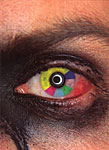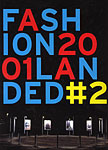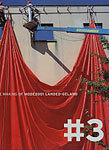|
FASHION2001
LANDED
|
WALTER
VAN BEIRENDONCK And of course through our Western eyes, which are trained to view the body clinically, we are bound to regard certain practices, such as scarification and the remodelling of the skull, as a form of disfigurement. These practices affect a body that we as modern people are trained to care for and keep intact for as long as possible. In this sense the plastic surgery that Amanda Lepore and Orian subject themselves to is similar to the remodelling of the skull practised by the Mangbetu: it Interferes directly with the body. Except that this is now done by way of high-tech surgery. Can one compare the relationship between the Mangbetu and Lepore and Orian to that between a cave drawing and a high-definition television screen? 'Yes, I think one can, in the sense that it is a continuation of the same practice using different means. But of course the meanings are very different. For Orlan it is a statement as an artist. Amanda Lepore was a man who transformed her original body into an extreme icon of "woman". These are individual statements that differ from the surrounding norms. For the Mangbetu, however, the same related practice was the norm - in so far as one can call tradition and rites "norms".' In MUTILATE? you display a number of objects that are clearly related to clothing fetishes, such as high-heeled shoes and corsets, and, for example, you show images of the Punk movement, which played a significant role in the introduction of fetishes into fashion. There has been a convergence of fetishism and fashion for some time now. Your collections are a good example of this. At the end of her book Fetish: Fashion, Sex& Power, Valerie Steele introduces an interesting concept: 'cultural ambivalence'. In her view, fetish fashion alludes to our ambivalence regarding the - now vanishing - boundary between 'normal' and 'perverse'. Is this also the ambivalence of MUTILATE?. 'Probably. In my view, the objects simply belonged in the exhibition. And yet MUTILATE? did not have "objects from fetishism and fashion" as a subtitle. What I mean is that once again it was not my intention to highlight any connection with fetishism. In the end it will all depend on the observer. There will be fetish shoes on display, but only fetishists will see them for what they are. Other people will see them only as shoes with very high heels, and think of sore |
feet
and a sore back. Yet others will mainly be impressed by the extreme appearance
of the shoes, the extent to which they are different, and how far a shoe
can metamorphose and still remain a shoe. As far as the corsets on display
are concerned, once again one person will consider them as a fetish, while
another will mainly wonder how they, or someone else, would look like in
them.' Radical fetishists claim that fashion is 'stealing' their look and that it presents watered-down versions of it out on the catwalk, while others think that fetishism should be accepted more by fashion. 'I have done my very best to break through the codes. I started to use fetish and S&M elements in collections quite suddenly. Nevertheless, I always had the feeling that this caused a certain resentment. Fetishists did not really like the publicity, while others found the level of fetishism taboo. These codes seem to be highly charged. I have tried never to use this material gratuitously. If you do, then you get phenomena such as latex that has gone from fetishism to fashion and then out of fashion and back to fetishism. But when codes become too obsessive, too narrow, too much of a cliché, and ridicule the whole world, then I am almost glad that things have been stirred up a bit. A section of the MUTILATE? exhibition is called AVATAR. 'I got to know the word "avatar" through the cyberworld, where it signifies a digital identity that one can assume on the Internet. It comes from Hinduism and represents the descent or incarnation of the god Vishnu, but it is used here in its high-tech context. MUTILATE? also comprises a display of historical material, an ethnographic section and current developments with silhouettes by contemporary designers. I did not want to identify a certain evolution, but felt that it was necessary to have a vision of the future. I thought that the MUTILATE? theme in fashion might result in a life as an avatar in cyber-space, where the physical is completely discarded. Anyone can create an identity for themselves and send it into the world in their stead, a social world that is completely digital. I see it quite literally, in the identity game, as the wasting away of the body - a human image which moves as a strictly digital identity in different guises in cyberspace.' -> next |
|||
|
|


